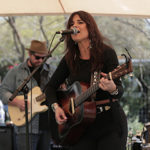
Adding a surprising new element is something many traditional conferences do in order to stay fresh. Last year and this year, Burning Man — a weeklong “experimentation in community and art” that inhabits Nevada’s Black Rock Desert from the last Monday in August until Labor Day every year — included a new sound. Well, actually an old sound: classical music.
Burning Man is a showcase of artistic expression and takes its name from the event’s culminating ritual — the burning of a large wooden effigy. It’s hallmarks include experimental and interactive art installations and performances, art cars, and wildly flamboyant costumes. And, of course, music — mostly techno and dub step, a genre of electronic dance music.
But last year, “a group of classical musicians were fomenting a quiet rebellion,” according to an NPR story, to bring Burning Man’s first-ever string orchestra to attendees.
How does a music genre associated with high society and perceived as stuffy go down among burners? Very well, and not just for the novelty factor. (Let’s face it, the outrageously unusual is commonplace at Burning Man.) In the NPR story, writer and Burning Man attendee Noah Crowe explained why: “Because we’ve grown up. Because the culture is evolving. They say the most common misconception about Burning Man is that it’s a festival. When really, the [Burning Man organization] considers it a city. So as a city, or as a society, we are evolving and enculturating ourselves into having a richer diversity of experiences.”
It’s not just the sense of community that Burning Man shares in common with the best kinds of conferences. It’s an emotional connection. The Burning Man string orchestra’s conductor — a neuroscience researcher who goes by the name Dr. FireTuba — said that some of the “burliest men” came up to him after the group’s first concert in 2014 and told him that they cried like babies during Beethoven’s “Adagio Cantabile.”
“Yes, you can wear the outlandish outfits. You can look big and tough covered in dust,” the conductor said. “But that a piece of music, a couple hundred years old, can move you to tears, is really something special.”
For more on lessons that meeting professionals can learn from Burning Man, see this post by FreemanXP Strategy Director Shannon Gilcrease.




